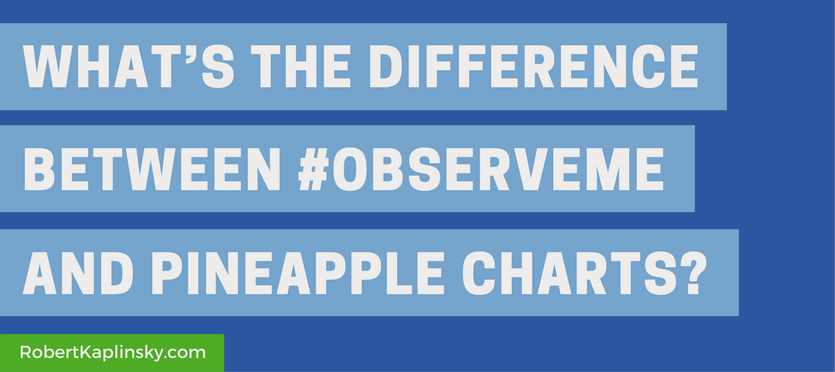I’m really excited by how increasing numbers of educators are opening up their classrooms to their peers. I believe that the type of feedback they give and receive has great potential to help educators improve. Two of the biggest movements in support of that trend are #ObserveMe and Pineapple Charts.
What I’ve been noticing though is that educators think that these two separate movements are the same. The tweets below are examples of what I mean.
We introduced our #observeme Pineapples initiative today @simmonsbucs & Ts are already participating! #hcseli pic.twitter.com/VYGeBeJ430
— Jeff Richardson (@jrichardson30) August 11, 2017
Pineapple's up @ C133 #ObserveMe @rpmcewan #HooverPride pic.twitter.com/bHGEyYmOkZ
— jill westerlund (@Jill_Westerlund) August 7, 2017
So, in this post I want to clarify how these two initiatives share the same goal of helping educators learn from one another, but aim to accomplish that goal differently. I’ll briefly explain what each one is and then share my take on their relative strengths and weaknesses so that you can find a balance that works for your situation.
As Jennifer describes it on her blog:
A Pineapple Chart is a system that allows teachers to invite one another into their classrooms for informal observation. The chart is set up in some location where teachers go on a daily basis: the teacher’s lounge, the copy room, or wherever teacher mailboxes live in your school. On the chart, teachers “advertise” the interesting things they are doing in their classrooms, activities they think others might want to observe. The activities could be as complex as a science lab, a history simulation, or a Skype session with a school in another country. Or they could be as simple as a read-aloud or a lesson on badminton.
Here’s an example of what it looks like in practice:
What exactly is a #pineapplechart? https://t.co/dF1DDYdi6E… #satchat #leadupchat https://t.co/lnHr9DoP82… pic.twitter.com/XGvM8Y6mhs
— Building STEPS (@BuildingSTEPS) June 16, 2017
Here’s an example of what it looks like in practice:
#ObserveMe @robertkaplinsky thanks for the suggestions!! #tusdawesome pic.twitter.com/koe1XDqlxH
— Kristin Hartloff (@KHartloff) July 27, 2017
- Pineapple charts do a great job of quickly informing staff members about what they could learn from their peers. It’s informal, so all you have to do is list what you are doing and when it’s happening. This makes it easy for everyone to participate in.
- #ObserveMe gives the teacher being observed specific feedback that can be used to improve her practice. So, both the observer and the person being observed gain insight that will help improve each other’s practice. Once you create the sign, you could leave it up for the entire year as long as those are the goals you still want to get feedback on.
Next, let’s look at potential weaknesses:
- Pineapple charts require regular updates so that people know what is going on in a classroom. That takes a little more maintenance. They also tend to encourage more of a one-sided flow of information: the observer is learning from the observed. Any feedback is shared informally.
- #ObserveMe requires more planning and work ahead of the observation. The teacher being observed needs to think of what she wants feedback on, use that information to create a sign, and display it in her room. Observers may also initially feel awkward giving anything but positive feedback.
There’s definitely value in both and I hope this post makes it clearer. If you see anything I missed or have an experience you want to share, please let me know in the comments.

